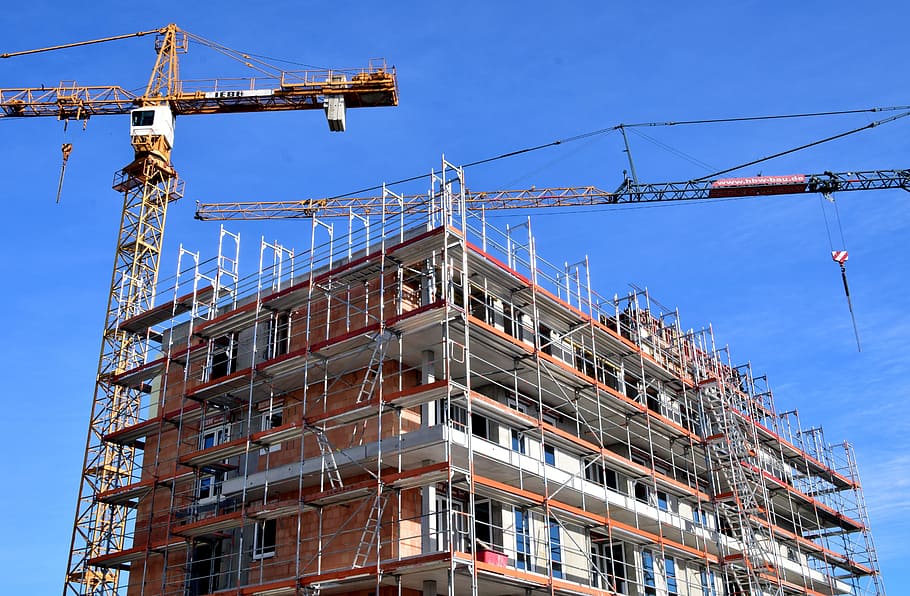As we enter 2024, the field of residential construction is progressing at a remarkable pace. Homebuyers are actively searching for new designs, energy-efficient solutions, and high-tech features that enhance comfort and convenience alike. Whether you're a first-time builder or a veteran in home ownership, understanding these emerging trends will be essential to make educated choices throughout the building process.
In this piece, we will explore the important trends influencing residential building in 2024, offering insights into design, planning, resources, and finance. From the advantages of energy-efficient home designs to the controversy between tailored homes and standardized models, we will deliver a comprehensive guide that enables you to create your dream home. Join us as we delve into the exciting possibilities that are in store in the next era of home construction.
Step-by-Step Guide to Building a Fresh House
Constructing a new house can be a exciting yet overwhelming task. The first stage involves detailed planning and preparation, which begins with defining your financial plan and identifying your particular requirements. This entails selecting a suitable lot, identifying your desired features, and establishing a schedule for the whole project. Researching different builders or contractors is also crucial at this stage, as they will play a significant part in bringing your vision to fruition.
After you have a clear plan, the subsequent step is to finalize your blueprint and obtain the necessary permits. Hiring an architect can turn out beneficial for creating a customized layout that matches both your lifestyle and financial plan. It is vital to be aware of local zoning regulations and building regulations to confirm your plans are compliant. With permissions granted, your contractor can start the building process, which will include site preparation, pouring the foundation, and framing the building.
As the building advances, you will need to remain proactively involved by communicating with your builder and making choices regarding materials and finishes. Regular inspections will help you oversee the progress and address any issues that arise. Once click site is complete, a final inspection and walk-through will ensure everything meets your standards before the big move-in day. This step-by-step approach will help simplify the procedure and make your ideal house a reality.
Funding Your Future Home Construction

When it comes to financing your new home construction, knowing your choices is essential. Numerous builders provide a variety of financing solutions, including construction loans, specifically designed to cover the expenses during the construction phase. These financing options usually transition to a regular mortgage after the construction is finished, making them a practical choice. It is essential to investigate various lenders and evaluate their interest rates, terms, and requirements to find the best fit for your financial situation.
Budgeting for your new home build also involves accounting for unexpected costs. Surprise costs can occur during the construction process, including extra permits, site preparation, and changes in material prices. By allocating a contingency fund, typically around 10 to 15 % of your total budget, you can help protect yourself against these unforeseen costs and ensure that your project stays on track financially.
Lastly, understanding how to qualify for a construction loan is a vital step for first-time builders. Lenders will assess your credit score, income, and current debts. To boost your odds of getting approved, it’s helpful to maintain a healthy credit score and collect all necessary documentation, such as income statements and asset information. Being thoroughly prepared will make the financing process easier and allow you to concentrate more on bringing your ideal home to life.
The Building Process and Ultimate Finishes
The building process of a recently built home is divided into various separate stages, where each plays a crucial role in realizing your dream to life. It starts with site preparation, where land is cleared and foundations are set. Following this, the structural structure is constructed, including the walls, the roofing, and floors. It's important to stay informed about the timeline and to maintain communication often with your contractor to monitor progress. Each stage has its specific challenges, but understanding what to expect can assist ensure a smoother process.
As the construction nears completion, the focus moves to finishing and finishing details. This stage involves putting in fixtures, flooring, and cabinets, as well as painting and other cosmetic enhancements. It's important to keep an eye on the quality and craftsmanship during this phase, as these factors can significantly impact the overall aesthetic and functionality of your home. Furthermore, you may consider to begin discussing landscaping possibilities to create an inviting exterior area that matches your recent residence.
Prior to moving in, conducting a thorough check is vital to resolve any problems that may have occurred during construction. This includes a last review to ensure everything satisfies your standards and complies with regulatory standards. Verifying all systems, such as the plumbing, the electrical systems, and HVAC, can help you avoid future issues. With all inspections complete and the final details installed, you can with assurance move into your new home, prepared to make lasting memories.
